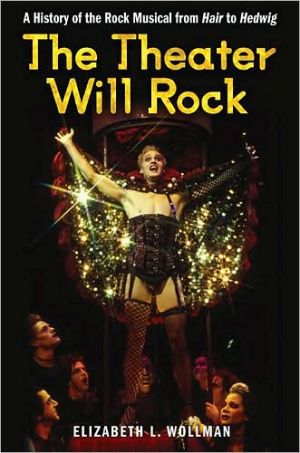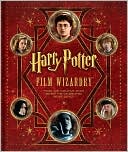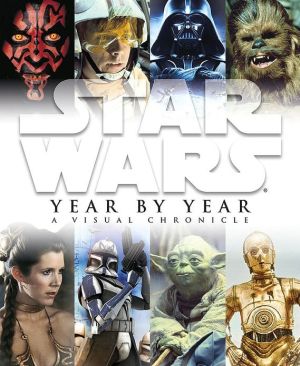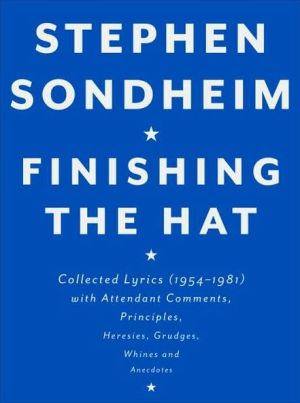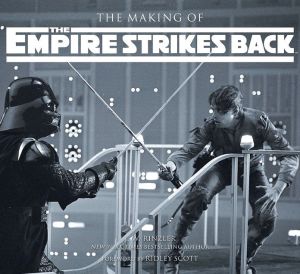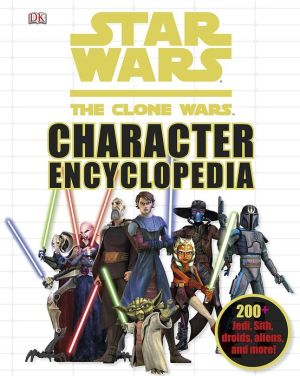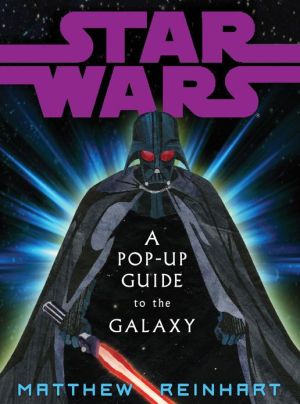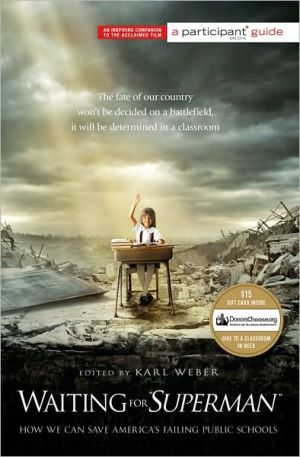The Theater Will Rock: A History of the Rock Musical, from Hair to Hedwig
The tumultuous decade of the 1960s in America gave birth to many new ideas and forms of expression, among them the rock musical. An unlikely offspring of the performing arts, the rock musical appeared when two highly distinctive and American art forms joined onstage in New York City. The Theater Will Rock explores the history of the rock musical, which has since evolved to become one of the most important cultural influences on American musical theater and a major cultural export. Packed with...
Search in google:
Chronicles the rock musical's artistic and financial blockbusters---and bombs---from 1960 to the present
The Theater Will Rock\ A History of the Rock Musical, from Hair to Hedwig \ \ By Elizabeth L. Wollman \ THE UNIVERSITY OF MICHIGAN PRESS\ Copyright © 2006 University of Michigan\ All right reserved.\ ISBN: 978-0-472-03402-4 \ \ \ \ Chapter One\ The Birth of the Rock Musical in New York City \ In the years since its Broadway premiere at the Biltmore Theater on April 29, 1968, Hair: The American Tribal Love-Rock Musical has been awarded landmark status as the very first rock musical. The musical's designation as a revolutionary piece of theater began almost immediately: although publicly derided by a handful of Broadway potentates and dealt a few scathing reviews, Hair was nevertheless ecstatically received by some of New York City's most influential theater critics-notably Clive Barnes and Brooks Atkinson of the New York Times. Audiences also embraced Hair. The original Broadway production outlasted the youth movement it depicted, running for 1,750 performances and spawning several international touring companies and productions across North America, Asia, and Europe before closing on July 1, 1972.\ Hair's milestone designation results not only from the experimental qualities of its conception and direction, but also from its effective blend of rock and Broadway musical styles, which had previously been regarded as mutually exclusive. Without question, Hair was unique in a number of ways. It was the first Broadway musical devoted to the hippie culture of the 1960s; the first to feature nudity; the first critically and commercially successful Broadway musical to rely exclusively on rock instrumentation; and, as a result, the first to feature elements of rock music throughout its entire score. Despite its many accomplishments, however, Hair ultimately failed to spur the "revolution" in the American musical theater that many critics and historians predicted it would.\ Perhaps awarding any musical "revolutionary" status in the first place is unfair, especially since labels assigned with such fervor are often bound to be inaccurate. What tends to be ignored or forgotten in most musical theater histories is that Hair was by no means the first staged musical to feature rock music, nor was its composer, Galt MacDermot, the first to attempt to fuse two genres that had previously been considered mutually exclusive. In fact, Broadway and Off Broadway composers had been grappling with rock 'n' roll for at least a decade before Hair premiered at the Biltmore. Although these composers usually failed where MacDermot succeeded, their work sheds light on a fact that is often overlooked: Hair was less a revolutionary musical than an evolutionary one, whose creators managed to offer audiences a fusion that had been desired for years.\ Early Attempts at Rock 'n' Roll on Broadway\ The interest in adapting rock 'n' roll for use in the musical theater was at least initially born of a perceived necessity, not out of any affection on the part of Broadway composers for the new style. The popularity of Broadway music, which for decades had been synonymous with America's popular music, had begun to decline through the late 1950s and early 1960s, as reflected in several disappointing seasons dominated by unexceptional musicals (notable exceptions included West Side Story in 1957). Concurrent with Broadway's decline in popularity was the emergence of rock 'n' roll, a popular music style that was closely linked to an increasingly powerful youth market.\ Initially convinced that rock 'n' roll was a noisy, vulgar fad that would fade with time, Broadway's theater composers simply ignored the new musical genre. Yet by the end of the 1950s, rock 'n' roll was only continuing to gain momentum, while Tin Pan Alley fare was, without question, dying away. Of particular cause for concern among Broadway composers was the fact that while Tin Pan Alley had traditionally catered to audiences of all ages, rock 'n' roll was almost exclusively the domain of the young. On Broadway, the average age of audiences began to rise, and the American musical "became theater for a complacent, Eisenhower America."\ For some of the more traditional Tin Pan Alley composers, the advent of rock 'n' roll signified the abrupt end of long and lucrative careers. Even those composers who remained active gradually found that their newest songs were not selling as well or being broadcast on the radio as frequently as their older songs had been. Broadway composers' ambivalence toward rock 'n' roll would only continue to plague them in ensuing years. Although most theater composers reacted negatively to rock 'n' roll, some nevertheless attempted to work elements of the style into a musical number or two, in hopes of appealing to young audiences. In these cases, however, a lack of appreciation for or understanding of the new genre was usually thuddingly obvious. That the creators of Broadway musicals were attempting to capitalize on a musical style with which they were largely unfamiliar and uncomfortable is clear upon examining some of the earliest attempts to bring rock 'n' roll to the Broadway stage.\ In general, Broadway composers who experimented with rock 'n' roll during the middle and late 1950s did so by mocking the music, either through staging, dialogue, lyrics, or combinations thereof. This approach may be interpreted as an attempt to appeal to younger audiences while simultaneously insuring that the majority of Broadway theatergoers-historically white, middle-class, middle-aged adults-would not be alienated. Such a tactic was perhaps necessary at first. In its early years, rock 'n' roll was poorly received by many such adults, who found it abrasive, incoherent, and linked to social problems like juvenile delinquency, racial strife, sexual permissiveness, and the widening generation gap. Yet in trying to appeal across the generational divide, theater composers usually succeeded in simply mocking the growing youth culture for the benefit of adults.\ Take, for example, the final edition of the Ziegfeld Follies, which opened at the Winter Garden Theater on March 1, 1957. The production, which commemorated the fiftieth anniversary of the Follies, was a critical and commercial failure that closed after three months and 123 performances. While the show's star, Beatrice Lillie, received strong reviews, many critics saw in this last edition a desperate attempt to recapture the past glories of a fading genre. "Perhaps the formula of the big, brassy Broadway revue is obsolete, quite apart from the 'Ziegfeld Follies,'" Brooks Atkinson argued in his review for the New York Times. "The energy is now going into other forms of entertainment."\ The production did, however, feature what is likely the very first musical number even approximating rock 'n' roll to grace a Broadway stage. The song "I Don't Wanna Rock," written by David Rogers and Colin Romoff, was performed by fifty-year-old Billy De Wolfe in the role of "The Juvenile Delinquent" and an ensemble chorus of "Tenth Street Sheiks." Unfortunately, the music used in this edition of the Ziegfeld Follies was never recorded and the notated music seems to have been lost; it is thus impossible to determine how, exactly, a brassy, old-fashioned musical revue negotiated a brand-new form of popular music.\ The second Broadway show to experiment with rock 'n' roll was a revue entitled The Girls Against the Boys, with music by Richard Lewine and Albert Hague, and sketches and lyrics by Arnold B. Horwitt. Although this production, like the 1957 Follies, was never recorded, a piano score survives. The Girls Against the Boys featured Nancy Walker, Bert Lahr, Shelley Berman, and the up-and-coming Dick Van Dyke, among others, in a series of sketches and songs that explored the ups and downs of domesticity. Despite the efforts of what critics roundly praised as an admirable cast, The Girls Against the Boys was a flop; it opened at the Alvin Theatre on November 2, 1959, and closed after sixteen performances. One sketch from the show featured the thirty-seven-year-old Walker and the sixty-four-year-old Lahr as "a pair of rock and rollers, he in blue jeans, one of those crazy loafer jackets and a T-shirt of blue and white stripes, she in a pleated skirt and blue jacket." During this sketch, the actors mocked the fashions and dances accompanying early rock 'n' roll with the song "Too Young to Live."\ "Too Young to Live" features few elements that are truly reminiscent of 1950s rock 'n' roll. While most early rock 'n' roll songs, like their rhythm-and-blues predecessors, were built on successions of choruses adhering to the standard twelve-bar blues form, "Too Young to Live" is in a verse-chorus form that has always been typical of Tin Pan Alley fare. The song modulates between the verse and chorus-oddly, from G major to E-flat major-which is not reminiscent of the tonally simple language typical of early rock 'n' roll.\ The one element that "Too Young to Live" clearly borrows from early rock 'n' roll is the syncopated bass line featured in its verse section, which emulates bass lines used in songs that accompanied the rock 'n' roll line dance known as the stroll. The bass line, however, disappears at the beginning of the chorus, as does any further indication that "Too Young to Live" is supposed to be a rock 'n' roll song.\ Despite the composer's attempt to infuse elements of rock 'n' roll into "Too Young to Live," the song-as suggested by its facetious title-did more to mock the blossoming youth culture and the popular music associated with it than it did to attract young audiences:\ Why can't we share the passion That thrills us through and through, Though we be adolescent And adenoidal too?\ They tell us we're too young to live. But who are they to say? When Saturday night in your daddy's Chevrolet We found we're not too young to ... live!\ They tell us we're too young to live. But we know more than they. And when we come home with that tiny relative, They'll know we're not too young to ... live!\ The subject matter of "Too Young to Live"-adolescent love and sexual longing-is certainly reminiscent of much early rock 'n' roll. Yet the lyrics, especially the punch line, depart egregiously from the music style in mocking teenagers from a decidedly parental perspective.\ Bye Bye Birdie\ On April 14, 1960, the first commercially successful Broadway musical to feature rock 'n' roll in its score premiered at the Martin Beck Theater. Bye Bye Birdie, with book by Michael Stewart and music and lyrics by Charles Strouse and Lee Adams, parodied Elvis Presley and his teen fans, but unlike the rock 'n' roll spoof in The Girls Against the Boys, the musical managed to steer clear of mean-spirited humor. A thinly veiled satire based loosely on Presley's 1958 induction into the U.S. Army, Bye Bye Birdie gently poked fun at teens and adults alike, and thus proved popular with audiences of all ages.\ Bye Bye Birdie producer Edward Padula first thought to satirize the rock 'n' roll phenomenon in the mid-1950s; he nevertheless waited to execute his idea because he wanted to make sure that the resultant musical would be free of elitism or condescension. Padula eventually hired Michael Stewart to develop his idea into a full-length book, and was pleased with the results: Stewart succeeded in realizing Padula's desire for a musical that refused to side with one generation over the other, but that instead parodied all of its characters equally, and with affection.\ The lighthearted plot of Bye Bye Birdie centers around Conrad Birdie, a handsome but dim-witted rock 'n' roll sensation who has been drafted into the army. His call-up muddies the plans of his manager, Albert Peterson, whose intention to marry his longtime secretary and girlfriend, Rose Grant, requires Birdie's continued output as a recording artist. Eager to become Albert's wife and business partner, Rose devises a plan: in a publicity stunt to be aired nationally on The Ed Sullivan Show, Birdie will sing a new song, "One Last Kiss," to a carefully selected teen admirer; if the song is a hit, Albert and Rose will be able to live off the royalties until Birdie is discharged.\ The teenager selected for the stunt is fifteen-year-old Kim MacAfee, from the small town of Sweet Apple, Ohio. In preparation for the television broadcast, Birdie and his entourage converge on the tiny town. Chaos ensues: Birdie, Albert, and Rose stay at the MacAfee household, to the dismay of Kim's father Harry, who embodies the older generation's befuddlement over the teen obsession with rock 'n' roll. Birdie's flirtatiousness drives a rift between Kim and her steady boyfriend, Hugo Peabody, while Albert's overbearing mother shows up to cause friction between Albert and Rose. Rose responds to her future mother-in-law's meddling by going on a bender, bursting into a local Shriners meeting, and breaking into a wild dance. Meanwhile, on the night of the telecast, Birdie is upstaged by the mugging, camera-happy Harry McAfee, and knocked over by the jealous Hugo before he can give Kim her kiss. Of course, everything works out in the end: Kim reconciles with Hugo, Birdie enlists, and Albert and Rose plan to marry.\ While Bye Bye Birdie was something of an equal-opportunity satire, the musical nevertheless resorted to particularly exaggerated parodies of rock 'n' roll when it borrowed from the style at all. While most of the score from Bye Bye Birdie-which includes the standards "Put on a Happy Face" and "Kids"-does not reflect any rock 'n' roll influence, the two songs performed by Conrad Birdie are heavily influenced by the style, and are thus sharply distinguished from the rest of the score.\ The first of these songs, "Honestly Sincere," is sung in act 1 when Birdie arrives in the town of Sweet Apple. The song does not resemble early rock 'n' roll in terms of form; its sophisticated harmonic progressions and lack of focus on the I, IV, and V chords keep it firmly in the realm of Tin Pan Alley fare. Yet "Honestly Sincere" borrows heavily from rock 'n' roll in other respects: it is scored for electric guitar, bass, drums, and a brass section; it features a syncopated walking bass line; and the melody is built largely of short, repeated melodic fragments in a narrow range.\ The utterly ridiculous lyrics of "Honestly Sincere," however, cause the song to veer sharply from homage to parody. There is no attempt at rhyme or thematic development in the song. Rather, Birdie sings the following in the town square upon arrival in Sweet Apple, after finding himself surrounded by screaming local teens, one of whom has asked him to explain how he makes "that glorious sound":\ In everything I do My sincerity shows through I looked you in the eye Don't even have to try It's automatic! I'm sincere! When I sing about a tree I really feel that tree! When I sing about a girl I really feel that girl! I mean, I really feel sincere!\ Of course, the joke is on rock 'n' roll and its fans: the claim of sincerity is made by an overamplified boob in a gold-lamé suit, who sings and gyrates madly while his impressionable audience swoons and sighs before him.\ Birdie's second song, "One Last Kiss," borrows heavily from rock 'n' roll in its instrumentation, chordal framework, amplification, syncopation, and fragmented melody. Like "Honestly Sincere," this song is built of absurd, repetitive lyrics:\ Oh, gimme one last kiss! Oh, gimme one last kiss! It never felt like this! No, never felt like this! You know I need your love! Oh-oh-oh Gimme one last kiss!\ Of course, these lyrics are no more or less inane than those found in many contemporaneous chart-toppers. Yet in Bye Bye Birdie, the lyrics are rendered by a character whom the audience has come to know as a self-absorbed dimwit; by the very nature of their context, then, the songs work more to spoof early rock 'n' roll's emphasis on emotionalism over lyricism than they do to accurately reflect rock 'n' roll hits of the time.\ Only one song in Bye Bye Birdie reflects a true integration of traditional Broadway melody and early rock 'n' roll. Vibrant and imaginative, "The Telephone Hour," performed early in act 1, depicts small-town teenagers tying up their families' phone lines after school, as they buzz excitedly about the budding romance between Kim and Hugo. "The Telephone Hour" features rock 'n' roll's heavy syncopation, as well as its instrumentation and orchestration: the acoustic bass and saxophone double on the walking bass line; an electric guitar and snare drum alternately emphasize backbeats; and frequent triplets in the vocal lines contribute to the metric complexity. The song's lyrics emulate teen slang of the time ("What's the story, morning glory? What's the word, hummingbird?"; "It's crazy, man!"); and the intensity with which teens chat with one another on the phone is evoked by featuring a number of different conversations taking place at once, all of which fit into the overall harmonic framework.\ (Continues...)\ \ \ \ \ Excerpted from The Theater Will Rock by Elizabeth L. Wollman Copyright © 2006 by University of Michigan . Excerpted by permission.\ All rights reserved. No part of this excerpt may be reproduced or reprinted without permission in writing from the publisher.\ Excerpts are provided by Dial-A-Book Inc. solely for the personal use of visitors to this web site. \ \
Contents Introduction....................11 The Birth of the Rock Musical in New York City....................12Interlude 1: Rock "Authenticity" and the Reception of the Staged Rock Musical....................242 Hair and Its Imitators....................42Interlude 2: Audiences....................653 Rock Concept Albums and the Fragmented Musical of the 1970s....................73Interlude 3: Megamusicals....................1204 Spectacles of the 1980s....................130Interlude 4: Economics and Marketing....................1425 Rock Musicians in the Musical Theater: The 1990s....................158Interlude 5: Merging Aesthetics, Making Performances....................2016 Rock-Influenced Musicals at the Millennium: The Dawning of the Age of ... the Revival....................213Conclusion....................223Notes....................229Bibliography....................245Index....................259
